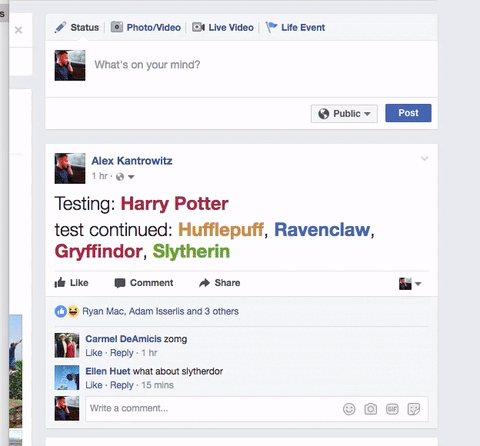OpenStack Down Under – OpenStack Days Australia 2017
As OpenStack continues to grow and thrive around the world the OpenStack Foundation continues to bring OpenStack events to all corners of the globe. From community run meetups to more high-profile events like the larger Summits there is probably an OpenStack event going on somewhere near you.
One of the increasingly popular events is the OpenStack Days series. OpenStack Days are regionally focussed events sponsored by local user groups and businesses in the OpenStack universe. The are intended to be formal events with a detailed structure, keynotes and sponsorship.
This year’s OpenStack Days – Australia was held June 1st in Melbourne, Australia and Red Hat was proud to be a sponsor with speakers in multiple tracks!
Keynotes
Despite being a chilly Melbourne winter’s day there was an excellent turnout. Keynotes featured OpenStack Foundation Executive Director Jonathan Bryce presenting a recap of the recent Boston Summit and overall state of OpenStack. He was joined by Heidi Joy Tretheway, Senior Marketing Manager for the OpenStack Foundation, who presented OpenStack User Survey results (you can even mine the data for yourself). Local community leaders also presented, sharing their excitement for the upcoming Sydney Summit, introducing a pre-summit Hackathon and sharing ideas to help get OpenStack into college curriculum.
Just in: The latest OpenStack User Survey has just begun! Get your OpenStack Login ready and contribute today!
Are you running an #OpenStack cloud? Share your feedback, technology choices in the 10th OpenStack User Survey: https://t.co/Ysizr1yTNb
— OpenStack (@OpenStack) June 26, 2017
Red Hatters Down Under
Red Hatters in Australia and New Zealand (ANZ) are a busy bunch, but we were lucky enough to have had two exceptional Red Hat delivered presentations on the day.
Andrew Hatfield, Practice Lead – Cloud Storage and Big Data
The first, from Practice Lead Andrew Hatfield, kicked off the day’s Technical Track to an overflowing room. Andrew’s session, entitled “Hyperconverged Cloud – not just a toy anymore” introduced the technical audience to the idea of OpenStack infrastructure being co-located with Ceph storage on the same nodes. He discussed how combining services, such as Ceph OSD’s onto Nova computes, is fully ready for production workloads in Red Hat OpenStack Platform Version 11. Andrew pointed out how hyperconvergence, when matched properly to workload, can result in both intelligent resource utilisation and cost savings. For industries such as Telco this is an important step forward for both NFV deployments and Edge computing, where a small footprint and highly tuned workloads are required.
Peter Jung, Business Development Executive | Cloud Transformation
In our second session of the day, Red Hat Business Development Executive Peter Jung presented “OpenStack and Red Hat: How we learned to adapt with our customers in a maturing market.” Peter discussed how Red Hat’s OpenStack journey has evolved over the last few years. With the release of Red Hat OpenStack Platform 7 a few short years ago and its introduction of the deployment lifecycle tool, Red Hat OpenStack Platform director, Red Hat has worked hard to solve real-world user issues around deployment and lifecycle management. Peter’s session covered a range of topics and customer examples, further demonstrating how Red Hat continues to evolve with the maturing OpenStack market.
Community led!
Other sessions on the day covered a wide range of topics across the three tracks providing something for everyone. From an amazing talk in the “Innovation Track” by David Perry of The University of Melbourne around running containers on HPC (with live demo!) to a cheeky “Technical Track” talk by Alexander Tsirel of Hivetec on creating a billing system running on OpenStack, the range, and depth, of the content was second to none. ANZ and Stackers really are a dynamic and exciting bunch! The day ended with an interesting panel covering topics ranging from the complexities of upgrading to the importance of diversity.
Keep an eye on OpenStack Australia’s video channel for session videos! And check out previous event videos from Canberra and Sydney for more OpenStack Down Under!
Of course, I’d be remiss if I were to not mention one of the most talked about non-OpenStack items of the day: The Donut Wall. Just have to see it to believe it, and here it is:
The donut wall is up!! Come chat to the @OpenStack foundation and get your sugar fix #OpenStackAU pic.twitter.com/a8M8RSuYpn
— OpenStack Australia (@OpenStackAU) June 1, 2017
A big success Down Under
The day was a resounding success and the principal organisers, Aptira and the OpenStack Foundation, continue to do an exceptional job to keep the OpenStack presence strong in the ANZ region. We at Red Hat are proud and excited to continue to work with the businesses and community that make OpenStack in Australia and New Zealand amazing and are extremely excited to be the host region for the next OpenStack Summit, being held in Sydney November 6-8, 2017. Can’t wait to see you there!
Want to find out how Red Hat can help you plan, implement and run your OpenStack environment? Join Red Hat Architects Dave Costakos and Julio Villarreal Pelegrino in “Don’t fail at scale: How to plan, build, and operate a successful OpenStack cloud” today.
Use OpenStack every day? Want to know more about how the experts run their clouds? Check out the Operationalising OpenStack series for real-world tips, tricks and stories from OpenStack experts just like you!
Quelle: RedHat Stack










